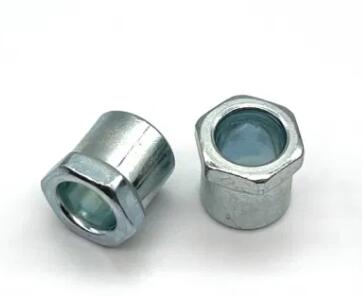Mastering the Art of Connection: A Guide to Fasteners
2023-10-20
In the world of construction, manufacturing, and DIY projects, fasteners play a crucial role. These seemingly small, often overlooked components are the unsung heroes that hold everything together. From building a sturdy structure to fixing a leaky faucet, fasteners are the backbone of countless applications. In this guide, we'll explore the world of fasteners, understand their types, functions, and where you might encounter them in your daily life.
What Are Fasteners?
Fasteners are mechanical devices designed to join two or more objects together. They are essential for creating stable and reliable connections between materials, whether you're working with metal, wood, plastic, or other substances. Fasteners can be temporary or permanent, and they come in a wide variety of shapes and sizes.
Types of Fasteners
Fasteners come in an impressive array of types, each tailored for specific applications. Here are some common ones:
1. Screws: These threaded fasteners are versatile and come in various head styles, including flat, round, and pan. They're used to secure objects together, create non-permanent connections, and provide adjustable tension.
2. Nails: Nails are one of the oldest and simplest fasteners. They are ideal for securing wood and are used in carpentry and construction.
3. Bolts: Bolts are similar to screws but usually lack a pointed end. They require a nut to fasten two objects together and are known for their robust and durable connections.
4. Nuts: Nuts are paired with bolts and provide the mechanism for a secure connection. They come in various shapes, including hexagonal and square.
5. Washers: Washers are thin, flat discs placed under nuts or bolt heads. They distribute the load and prevent damage to the connected surfaces.
6. Anchors: Anchors are used to secure objects to surfaces like concrete, brick, or drywall. They come in various forms, such as wedge, sleeve, and toggle anchors.
7. Rivets: Rivets are permanent fasteners used for joining materials like metal sheets, leather, and fabric. They consist of a shaft and a head.
8. Clips and Pins: These include cotter pins, hairpins, and retaining rings, which are used for securing rotating components like wheels, axles, and gears.
Everyday Applications of Fasteners
Fasteners are an integral part of our everyday lives, even if we don't always notice them. Here are some common applications:
1. Home Construction: From framing to roofing, screws, nails, and anchors hold your home together.
2. Furniture: Fasteners assemble your furniture, ensuring stability and longevity.
3. Automobiles: Bolts, nuts, and clips are essential in the assembly of vehicles, securing everything from engines to chassis components.
4. Electronics: Tiny screws and clips are used in the assembly of electronic devices, including smartphones and laptops.
5. Aerospace: Precision fasteners are crucial in aircraft construction, ensuring safety and reliability.
6. Marine: High-quality, corrosion-resistant fasteners are used in shipbuilding to withstand harsh conditions.
7. Fashion: Rivets and snaps are used in clothing and accessories to create stylish and secure connections.
Choosing the Right Fastener
Selecting the right fastener is critical to the success of any project. Consider factors such as the material you're working with, the load the fastener will bear, the environmental conditions, and the desired permanence of the connection. It's also essential to choose the appropriate size, length, and type of fastener for the task at hand.
In conclusion, fasteners are the invisible heroes that keep our world connected. Whether you're building a house, assembling a piece of furniture, or securing your smartphone's components, fasteners are there, quietly ensuring that everything stays in its place. The next time you undertake a DIY project or marvel at a skyscraper, take a moment to appreciate the crucial role of these small yet mighty components.



